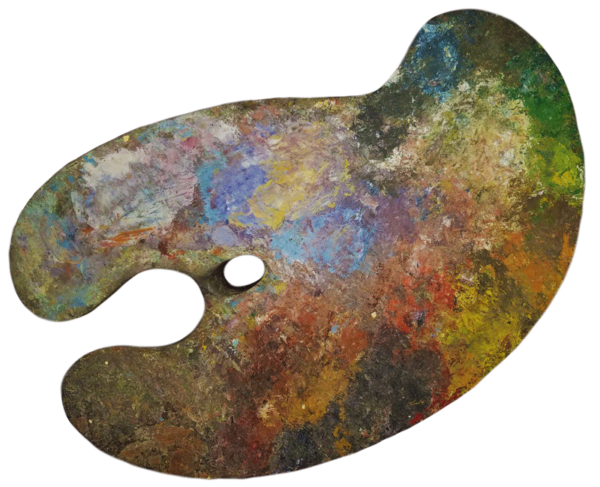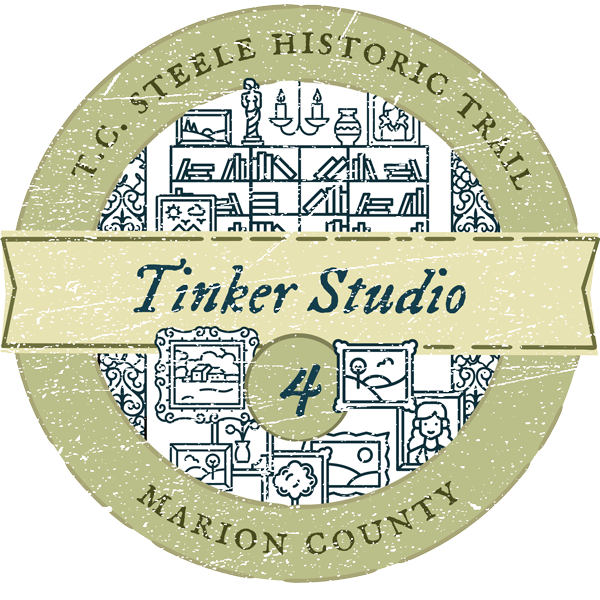
Tinker Studio
Herron High School
110 E. 16th Street
Indianapolis, Indiana 46202 – USA
Latitude: 39.78857°N, Longitude: 86.15542°W
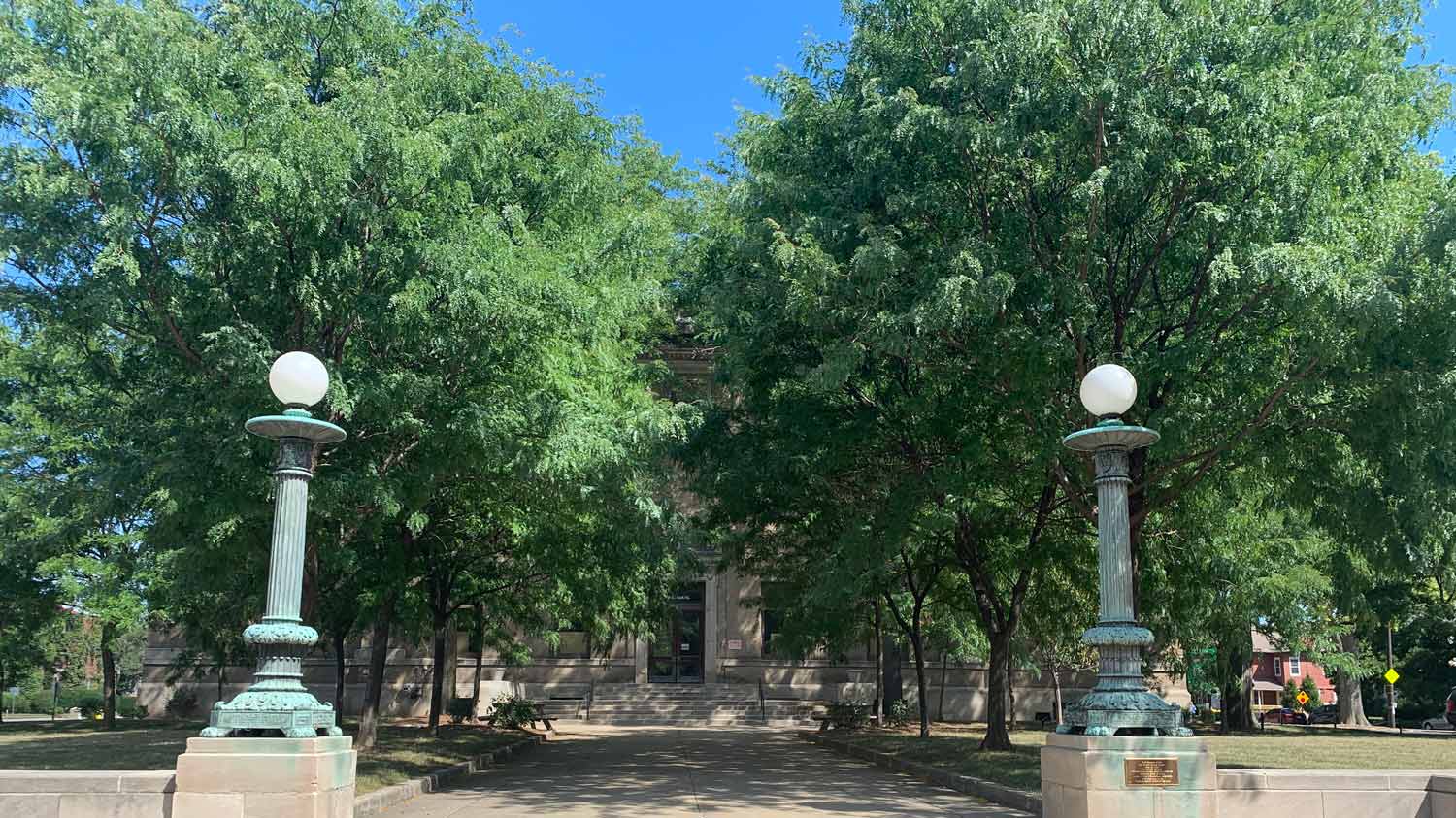
To Indianapolis & Beyond
In the 1870’s, Indianapolis attracted T.C. Steele with opportunities to paint portraits of the wealthy, exhibit his work, and network with art influencers like Herman Leiber, prestigious owner of the H. Lieber & Company Art Emporium.1 Steele met with modest success during this time , yet he yearned to experience arts and culture abroad.2
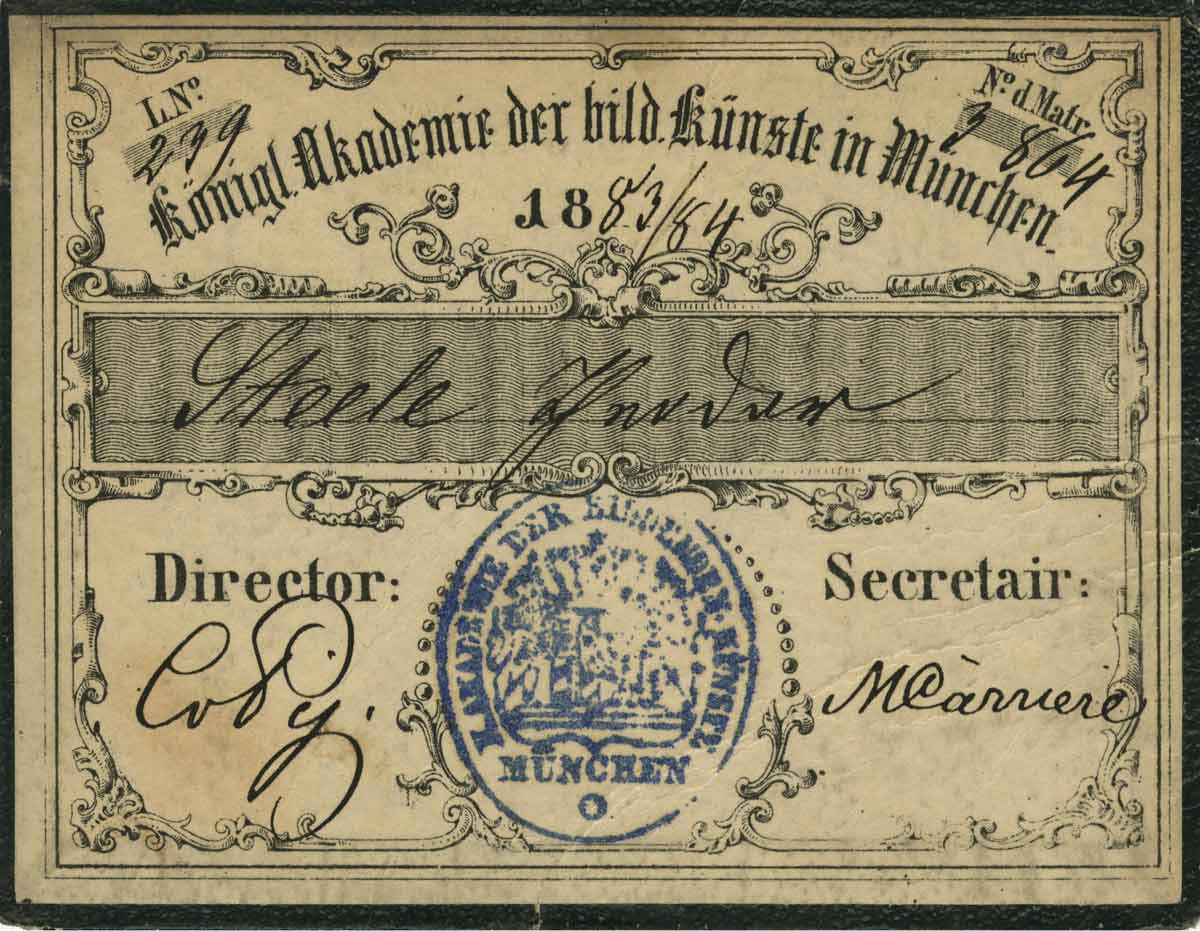
So with his family in tow (Libbie and their three children), Steele boarded the Red Line’s S.S. Belgenland sailing from New York on July 24, 1880. Their final destination was the famed Royal Academy of Art in Munich, Germany. Steele spent four years there, studying and painting a wide variety of subjects.
During his last year of training, he painted The Boatman, a sharp contrast to his later, and better-known, impressionist paintings. The Boatman was his prize-winning student exhibition piece and remains one of his finest early works. You see can the painting virtually and in person when visiting Trail Stop 7.



Tinker House4; T.C. Steele’s library at Tinker House5; L to R: Unknown woman standing next to “Libbie” Steele, T.C Steele, Daisy Steele, and Brandt Steele outside Tinker House6
Back Home in Indiana
After an enriching time abroad, the Steeles returned to Indianapolis and began living at Tinker-Talbot place. The estate featured a large home where the family resided, and Steele shortly built a studio on the grounds which he opened to the public.
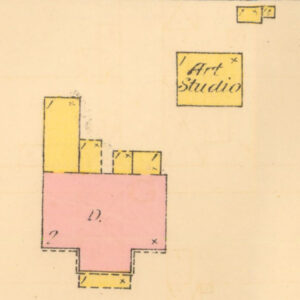
“Here the artist may be found, when not in the open air sketching, in all weathers, surrounded by his work. On entering one is struck by the number and variety of the pictures seen. . . Pictures hang upon the walls, recline on easels or rest upon the floor two or three deep, in profusion.”
Indianapolis News, 18872
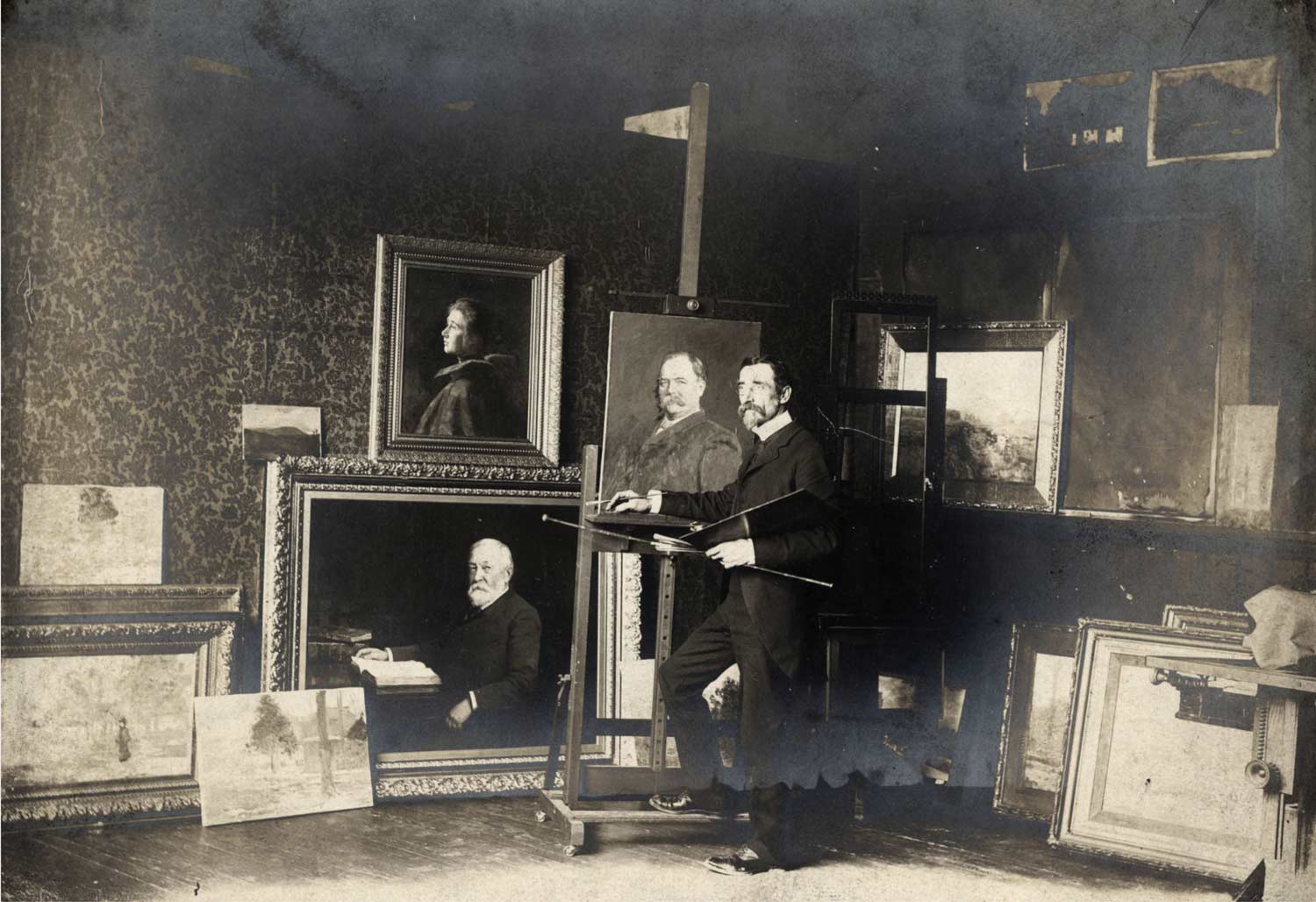
To repay sponsors who had financed his trip to Germany, Steele went on a portrait painting spree. In less than a year he completed 14 portraits. Over the next decade, he established himself as the city’s premier portrait artist. He painted such business leaders as Eli Lilly, Lyman S. Ayres, Clemons Vonnegut Sr. and painted the official portraits of Indiana Governors, Isaac Gray, Albert Porter, Alvin Hovey, Ira Chase and Claude Mathews.
All Governor’s portraits painted by T.C. Steele hang in the Indiana State Capitol. Steele also painted a portrait of Hoosier poet James Whitcomb Riley which hangs in the Indianapolis Museum of Art, and President Benjamin Harrison which hangs in the parlor of the Benjamin Harrison Presidential Site, Indianapolis, Indiana.
While living and painting in his studio at Tinker (1887-1901), Steele also taught classes and helped advance the quality of Midwestern art, notably as part of the Society of Western Artists. He served as vice-president of the Art Association of Indianapolis (established 1883).



John Herron Art Institute9 Art Students10; Woman viewing a painting exhibition at the Institute.11
To Cultivate & Advance Art
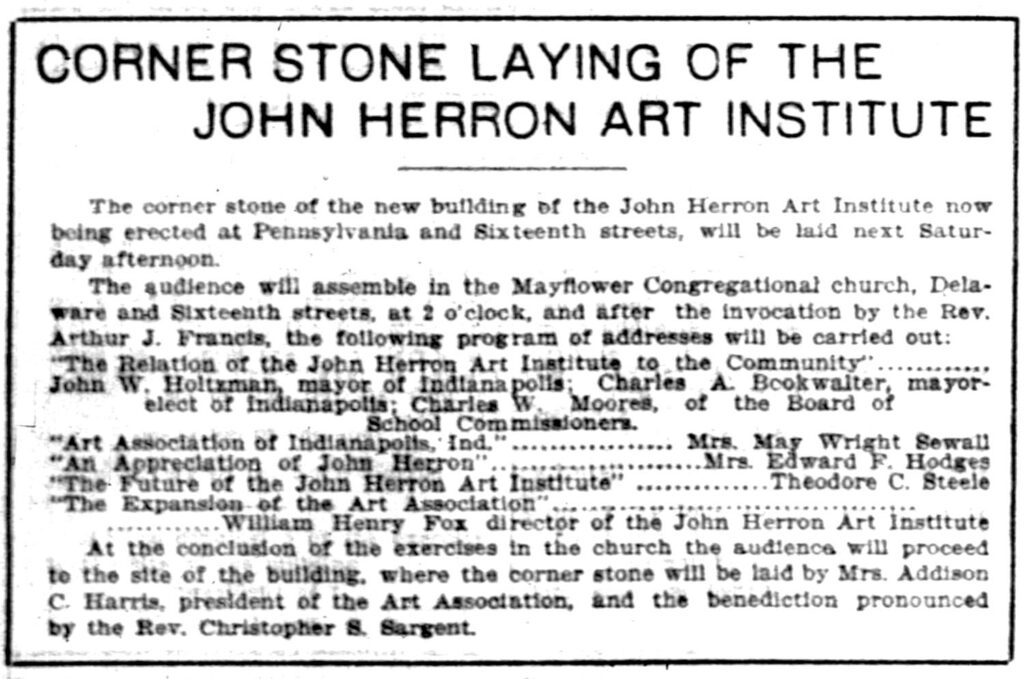
The Art Association purchased the Tinker-Talbot property in 1901 to build the John Herron Art Institute, which included a school and museum. The cornerstone was laid on Saturday, November 25, 1905, and T.C. Steele was a speaker at the ceremony. His remarks were titled “The Future of the John Herron Art Institute”.
“I know I voice the intention of the Art Association and the director elected to do this work, when I say they expect to make the John Herron Art Institute a live force in this community. To do the work that is at hand and to plan so broadly that future growth will not be impeded.”
T.C. Steele13
The John Herron Art Institute grew quickly, fulfilling the Association’s goal “to cultivate and advance art”. They hosted a large exhibition of Steele’s work in 1910. Then after his death in 1926, the Art Association of Indianapolis hosted another exhibit there. This memorial exhibit included 183 paintings owned by Indianapolis and Indiana residents, Steele family members and Indiana University.
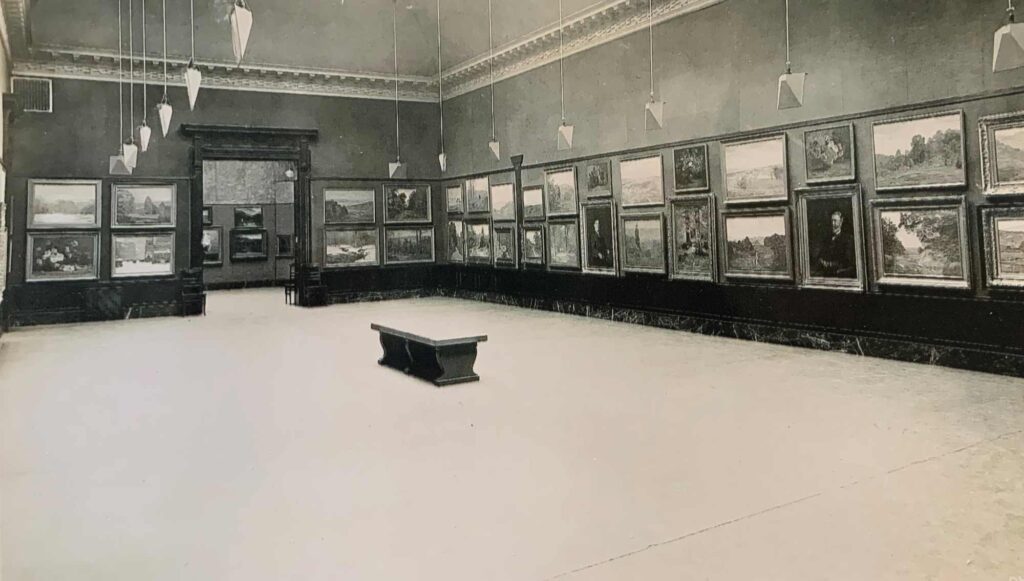
Over the next one hundred years, the Institute building went on to house the Indianapolis Museum of Art, then the Herron School of Art and Design, and is now the Mayor’s Charter School you see today – Herron High School.
The Old Northside
During the 14 years T.C. Steele and his family lived at Tinker Place, this area of Indianapolis was at the far north end of the city. Known today as “Old Northside” this area of Indianapolis is listed on the National Register of Historic Places.15


Artists William Forsyth and T.C. Steele outside Herron Art Institute16; Circle Hall, Old Northside17
While in this area, you will notice the rich architecture styles of Italianate, Stick Style, Queen Anne, Georgian, English Tudor, American Four Square, Free Classic, and Dutch Colonial. There are also two churches in the Romanesque style, two Gothic churches, and one Neo-Classical church.18 All these noteworthy locations remain today. Look for the six Indiana Historical Markers noting key residents who lived in the neighborhood during the Steele family’s time here.
Related Steele Works
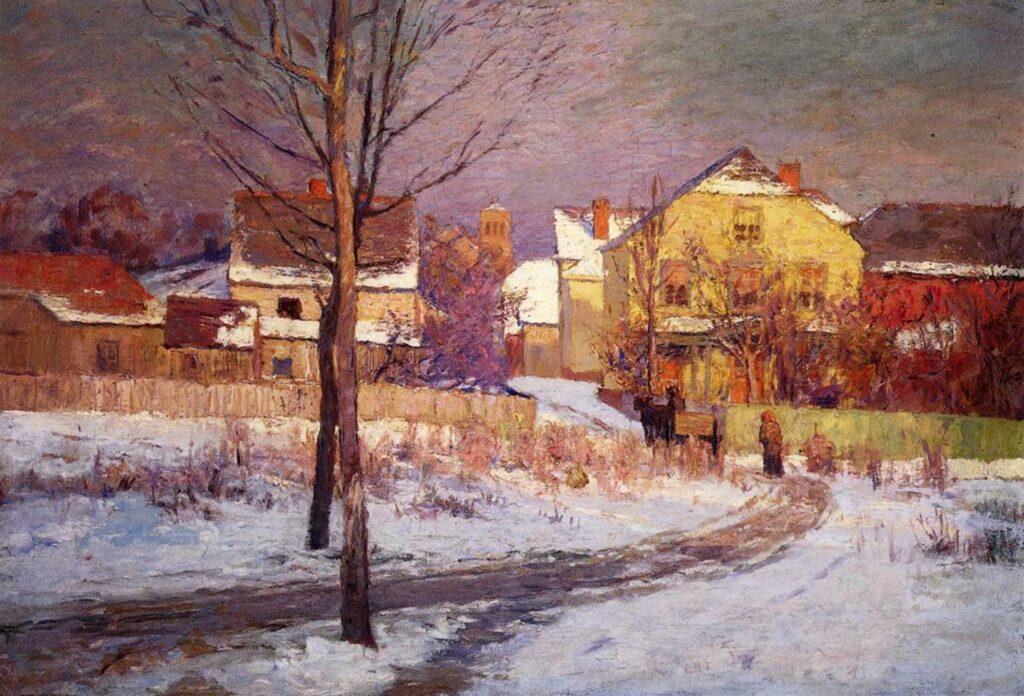
Tinker Place
1891, Oil on Canvas
Steele painted this winter cityscape looking north from Tinker House.
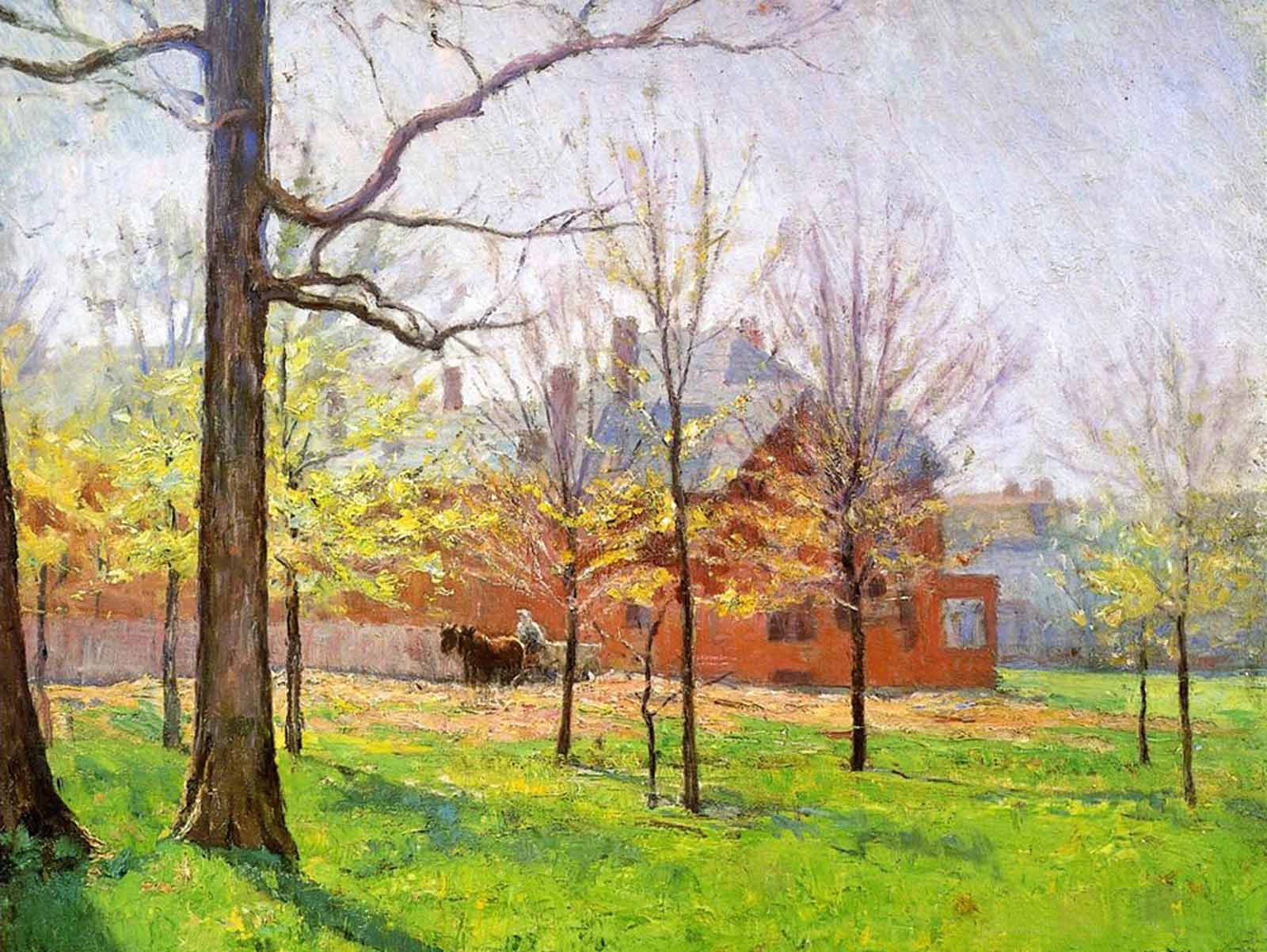
Talbott Place
c. 1897, Oil on Canvas
This painting, in the spring, is the view from the studio T.C. Steele built on the property of Tinker House
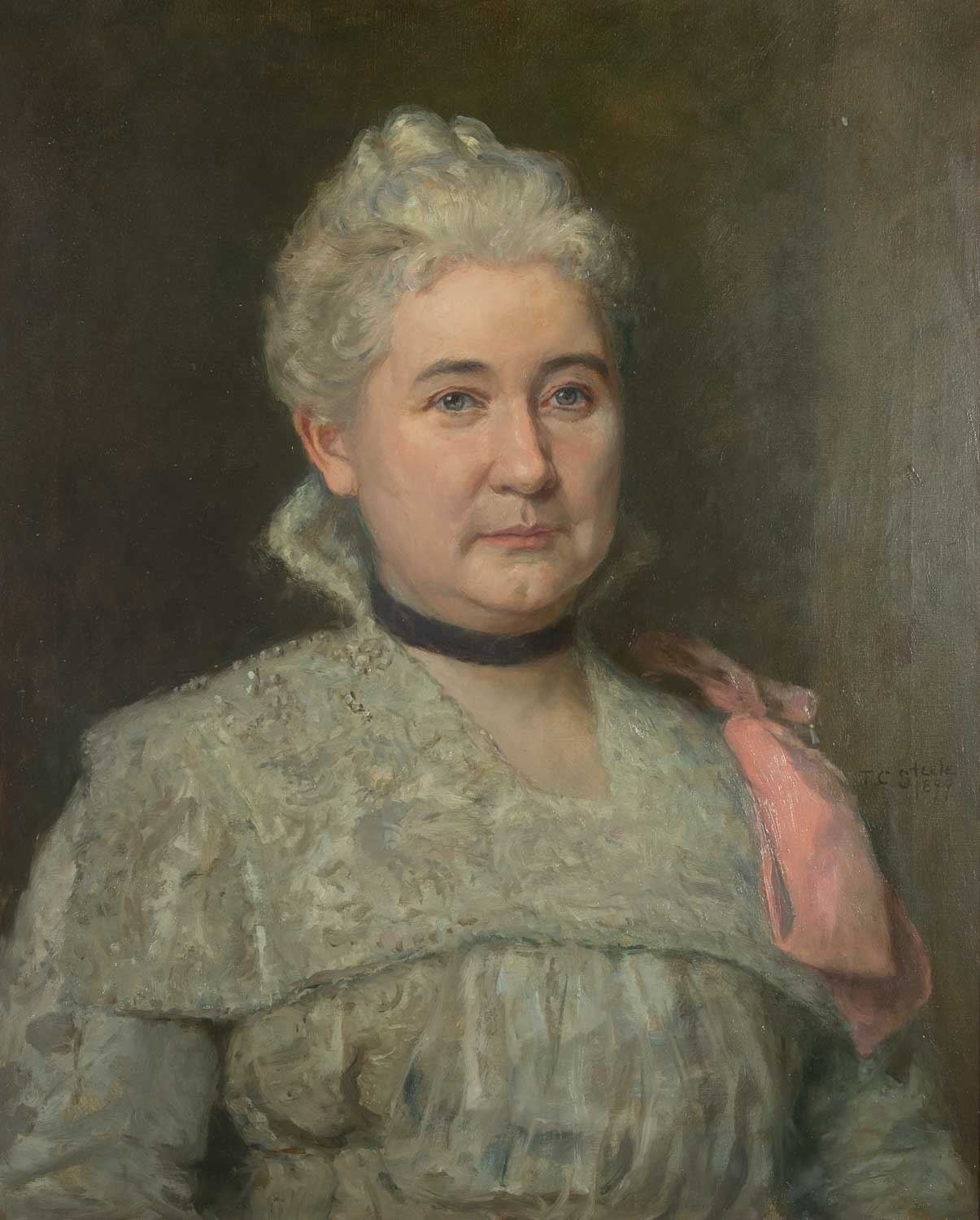
May Eliza Wright Sewall
1899, Oil on Canvas
With permission, The Indianapolis Propylaeum
May Wright Sewall (1844-1920) was a prominent leader in the Indianapolis community, and was instrumental in the founding of the John Herron Art Institute. She, along with her friend T.C. Steele spoke at the laying of the cornerstone, and she was a charter member of the Art association of Indianapolis which influenced the arts movement in Indianapolis and the building of the John Herron Art Institute.19
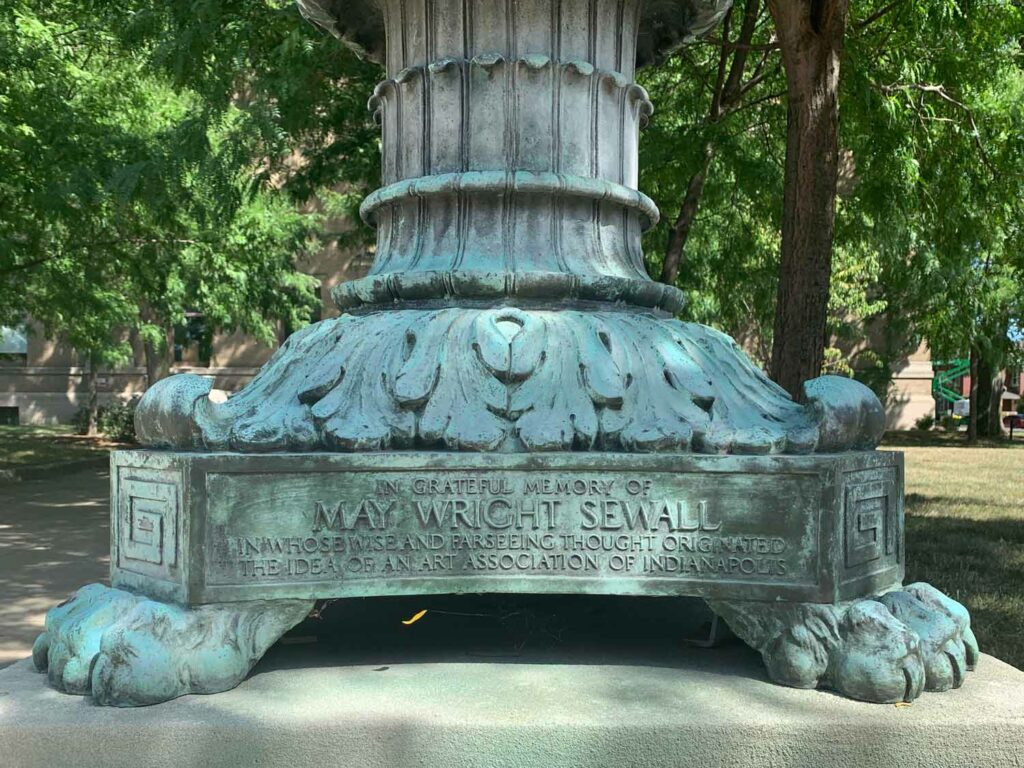
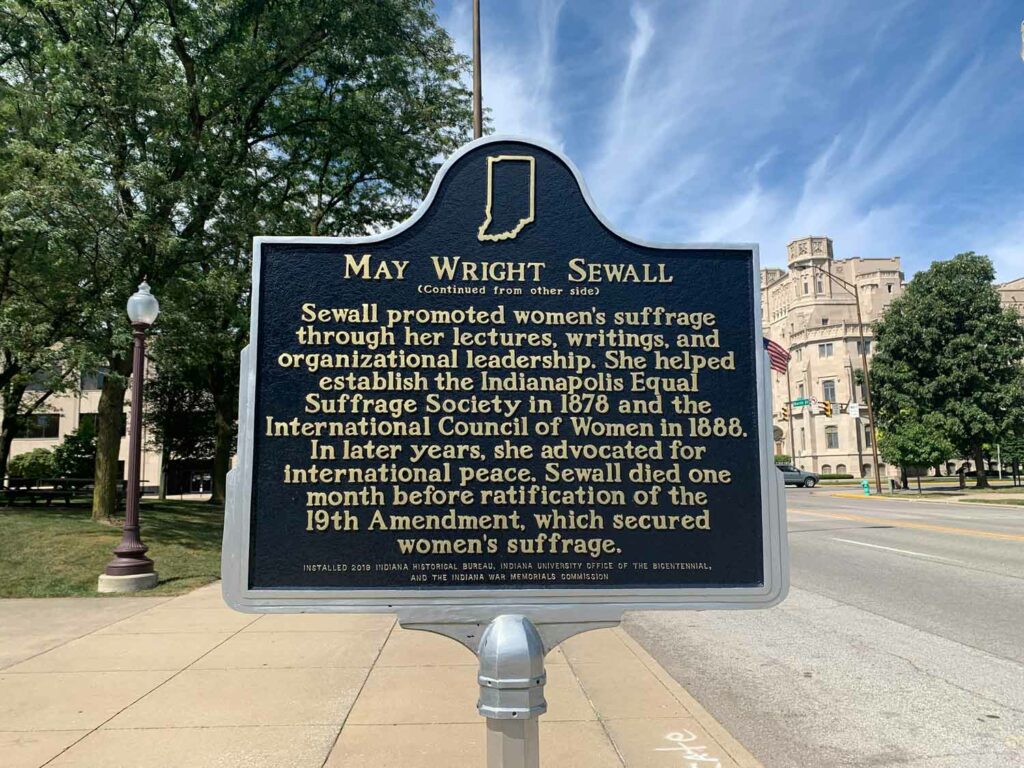
Nearby Attractions
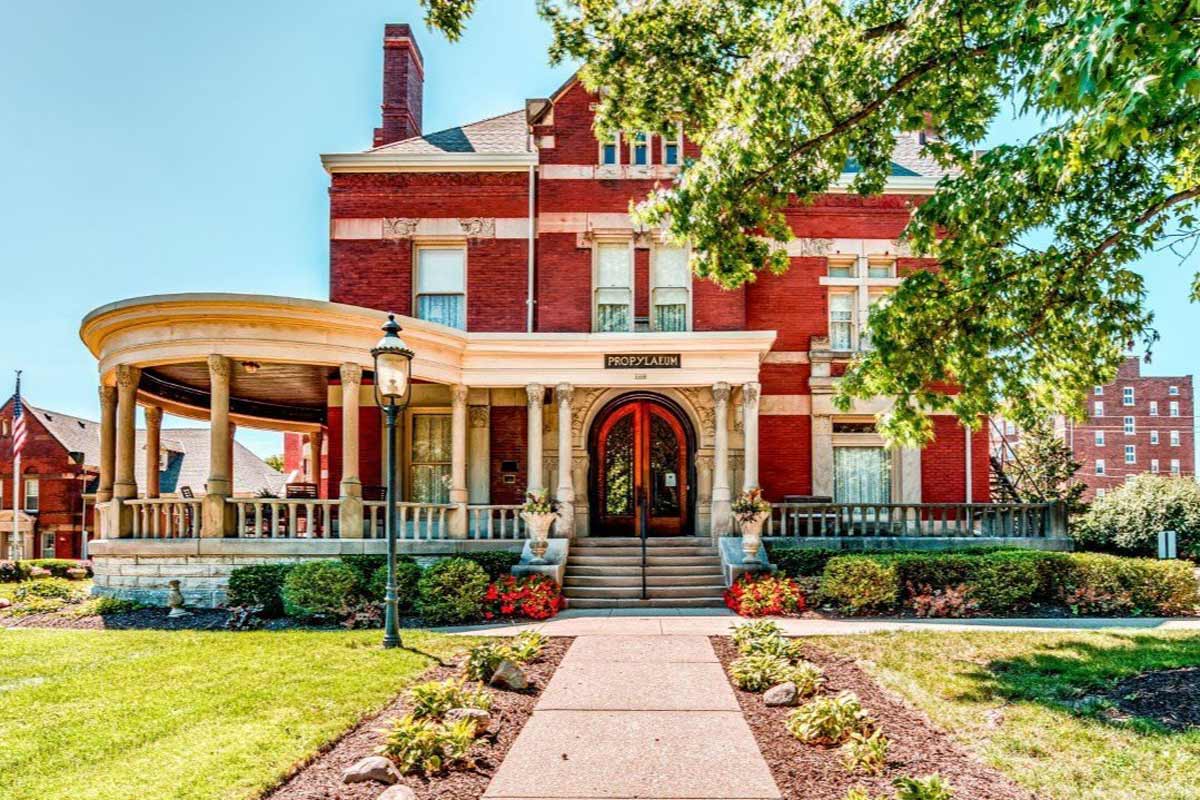
The Indianapolis Propylaeum
1410 N Delaware St.
Indianapolis, IN 46202
The Indianapolis Propylaeum, built around 1891, is a remarkable example of Romanesque Revival architecture. It holds a prominent position on the National Register of Historic Places. Situated just a short stroll away from Tinker, this esteemed establishment came into being in June 1888. Its inception was fueled by the collective efforts of women suffragists who had been tirelessly advocating for the right to vote.
Leading the charge as the founder and inaugural president was May Wright Sewall, a highly respected figure in the realm of women’s rights. Not only was she instrumental in the fight for suffrage, but she also made notable contributions to the Art Association of Indianapolis and the John Herron Art Institute.
During your visit, don’t miss the opportunity to see the distinguished portrait of May Wright Sewall. Painted by her dear friend, T.C. Steele, it graces the entry hall of the Propylaeum. Please note that appointments are required to view the portrait.
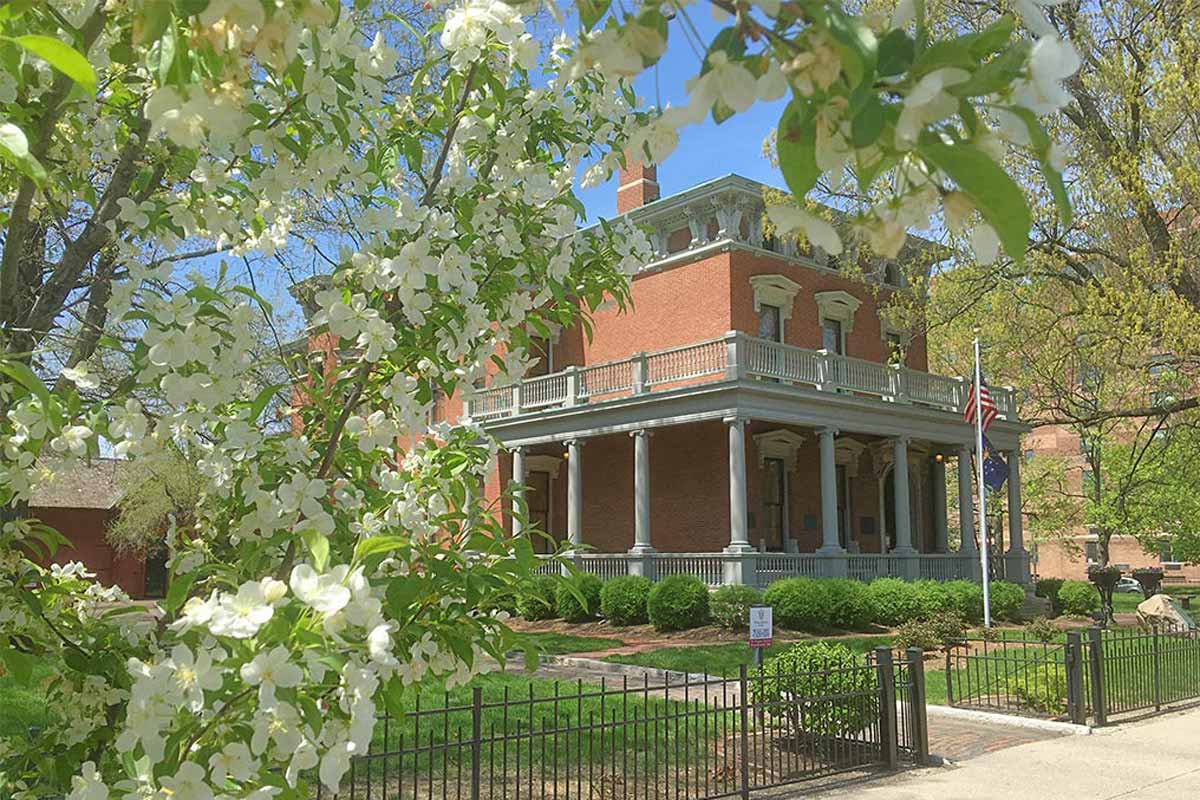
Benjamin Harrison Presidential Site
1230 North Delaware Street
Indianapolis, Indiana 46202
The Benjamin Harrison Presidential Site is conveniently located just a short walk from Tinker Talbot. General admission tickets are required to tour the 1875 Italianate Victorian family home of Benjamin Harrison, our country’s 23rd President. The house is beautifully adorned with period design and furnishings, and in the parlor, you can find a portrait of President Benjamin Harrison painted by T.C. Steele in 1901.
The house itself, built in 1874, is a remarkable example of Italianate architectural style and holds the distinction of being a National Historic Landmark. It served as the residence of Benjamin Harrison and his wife Caroline before their tenure in Washington as President and First Lady. After his return from Washington, President Harrison continued to live in this home until the end of his life.
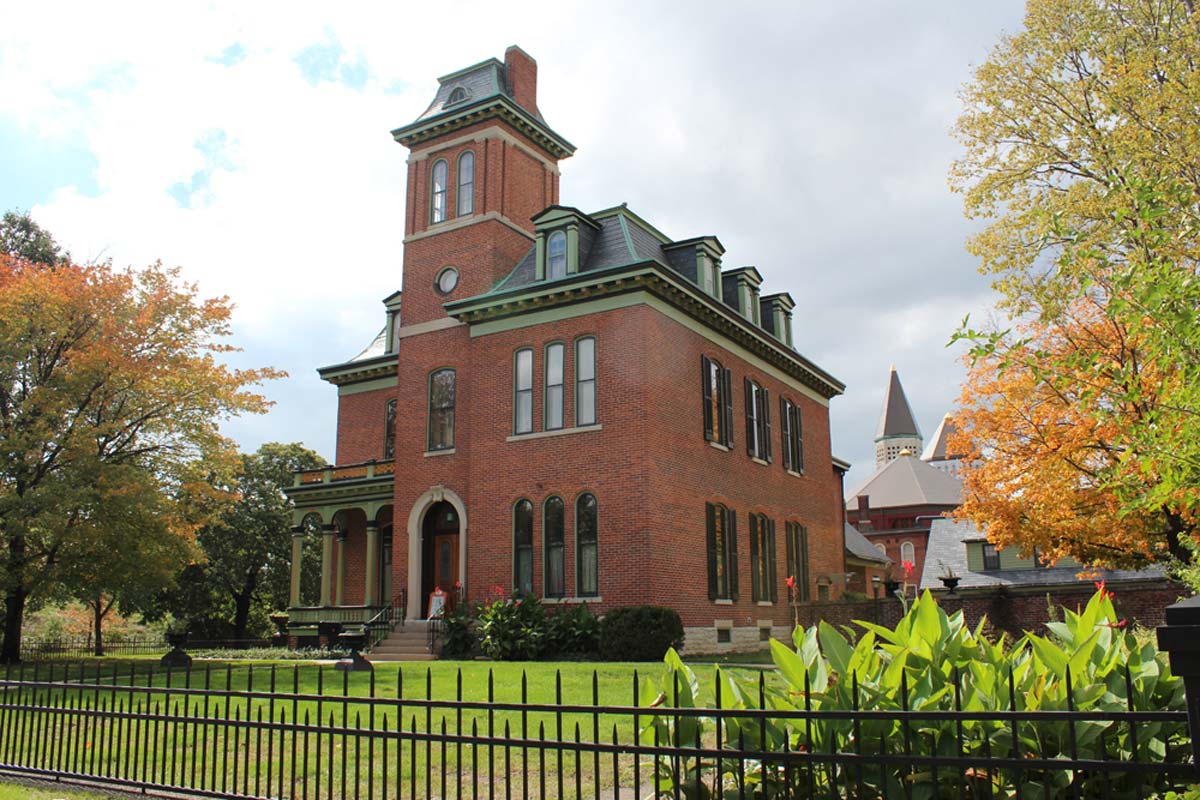
Morris-Butler House (Forest Home)
1306 N. Park Ave.
The Morris-Butler House, also known as Forest Home, is a Second Empire style home that was built around 1865. It holds significant historical value and is listed on the National Register of Historic Places. The property is associated with Ovid Butler, Sr., who owned the land and later resided there after the Morris family constructed the house. Ovid Butler was not only the founder of Butler University but also its first president. As a lawyer, he actively expressed his opposition to slavery through his writings. Butler lived in Forest Home until his passing in 1881.20
Today, the house is part of the Indiana Landmarks campus . It showcases a painting by T.C. Steele, titled “The Christ Child and the Infant St. John after Peter Paul Rubens,” which hangs in the entry hall. This artwork was created by Steele during his study of the “old masters” in Germany in 1883. Visitors can appreciate this remarkable painting by attending special events or scheduling an appointment to view it in the entry hall of Forest Home.
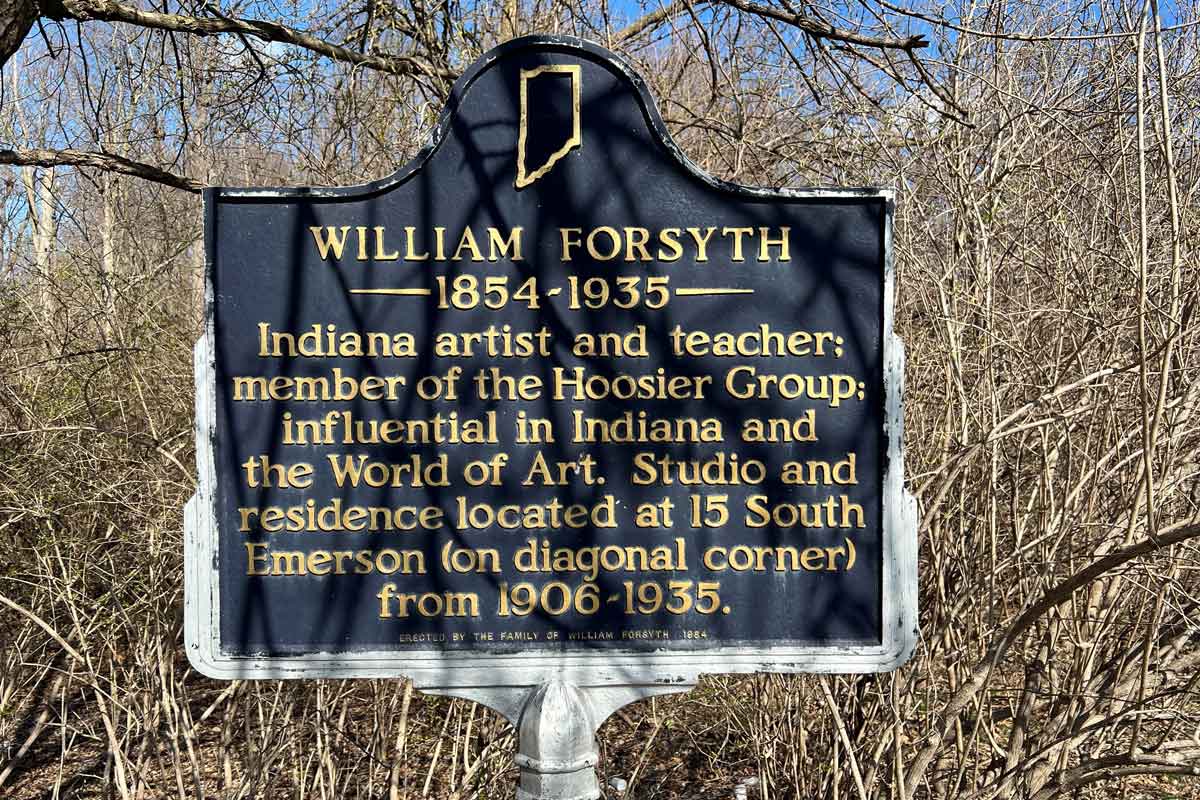
William Forsyth Historical Marker
When leaving Tinker House to visit the Hermitage (Trail stop 5 ), or if you are doing the reverse, leaving the Hermitage to visit Tinker Talbot (Trail stop 4) be sure to visit the William Forsyth Historical Marker on the northwest corner of the intersection of N. Emerson Avenue and E. Washington Street at Brown’s Corner Park. William Forsyth (fellow colleague of T.C. Steele and member of Hoosier Group of Indiana Painters).
Forsyth’s house was actually at 15 S. Emerson Avenue from 1906-1935, but is no longer standing and is now a commercial property. The house was located diagonally south of the Indiana Historical Marker market ( south east corner of N. Emerson Avenue and E. Washington Street)
Suggested Itinerary
- Stamp your digital passport at Herron.
- Find the T.C. Steele-Herron historic marker.
- Find the May Wright Sewall torches.
- Visit the Indianapolis Propylaeum and see the T.C. Steele portrait of May Wright Sewall (requires appt.)
- Walk by Morris Butler House (Forest Home).
- Visit Indiana Landmarks Headquarters (formerly Central Avenue Methodist Episcopal Church 1892).
- On your way to trail stop 5 (The Hermitage), see the William Forsyth marker.
References
1 “T. C. Steele Studio and Herron.” Indiana Historical Bureau, August 25, 2022. https://www.in.gov/history/state-historical-markers/find-a-marker/find-historical-markers-by-county/indiana-historical-markers-by-county/t.-c.-steele-studio-and-herron/.
2 “The Artist Steele – A Visit to His Studio.” Indianapolis News. February 19, 1887, p. 3.
3 T.C. Steele, Student Identification Card, Royal Academy of Fine Arts Munich. Indiana Historical Society Digital Images. Indiana Historical Society, 2017. Indiana Historical Society Digital Images.
4 Tinker House, Residence of T.C. Steele (first home of John Herron Art Institute). Indiana Historical Society Digital Images. Indiana Historical Society, 2017. https://images.indianahistory.org/digital/collection/p16797coll51/id/18/rec/3.
5 Library, Tinker Street Residence of T.C. Steele. Indiana Historical Society Digital Images. Indiana Historical Society, 2017. https://images.indianahistory.org/digital/collection/p16797coll51/id/221/rec/80.
6 T.C. Steele Family at Tinker Street Residence. Indiana Historical Society Digital Images. Indiana Historical Society, 2017. https://images.indianahistory.org/digital/collection/p16797coll51/id/222/rec/35.
7 Sanborn Map #76, 1887.
8 T.C. Steele in His Studio at Tinker House. Indiana Historical Society Digital Images. Indiana Historical Society, 2011. https://images.indianahistory.org/digital/collection/V0002/id/2611/.
9 John Herron Art Institute. Institute. Indiana Historical Society Digital Images. Indiana Historical Society, July 19, 2106. https://images.indianahistory.org/digital/collection/dc012/id/14976/rec/31.
10 Possible Class at Herron Art Institute. Indiana Historical Society Digital Images. Indiana Historical Society, 2017. https://images.indianahistory.org/digital/collection/p16797coll51/id/220/rec/79.
11 Herron Art Institute Galleries. Indiana Historical Society Digital Images. Indiana Historical Society, 2018. https://images.indianahistory.org/digital/collection/p16797coll51/id/527/rec/11.
12 “Corner Stone Laying of the John Herron Art Institute.” The Indianapolis News, November 22, 1905. https://www.newspapers.com/image/?clipping_id=50274662.
13 “Work of Now The Important Thing Says T.C. Steele.” The Indianapolis News, November 25, 1905. https://www.newspapers.com/clip/50286481/the-indianapolis-news/.
14 Photo of Memorial Exhibition, December 1926, John Herron Art Institute in Indianapolis, Indiana. James R. Ross Fine Art, Indianapolis, Indiana.
15 “The Old Northside.” Indiana Historical Bureau, July 30, 2022. https://www.in.gov/history/state-historical-markers/find-a-marker/the-old-northside-central/.
16 William Forsyth and T.C. Steele. Indiana Historical Society Digital Images. Indiana Historical Society, 2017. https://images.indianahistory.org/digital/collection/p16797coll51/id/318/rec/6.
17 Circle Hall, Northwest Corner of Monument Circle. Indiana Historical Society Digital Images. Indiana Historical Society, 2017. https://images.indianahistory.org/digital/collection/p16797coll51/id/150/rec/72.
18 Glass, James A. Interview with James Glass, Ph.D., Historic Preservation & Heritage Consulting. Personal, 2023.
19 “May Wright Sewall (1844-1920).” Indiana Historical Bureau, August 25, 2022. https://www.in.gov/history/state-historical-markers/find-a-marker/find-historical-markers-by-county/indiana-historical-markers-by-county/may-wright-sewall-1844-1920/.
20 “Ovid Butler Sr.” Indiana Historical Bureau, July 30, 2022. https://www.in.gov/history/state-historical-markers/find-a-marker/ovid-butler-sr/.
* The House of the Singing Winds: The Life and Work of T.C. Steele, Selma N, Steele, Theodore L. Steele, Wilbur D. Peat, 1966, Indiana Historical Society, Indianapolis, Indiana.

